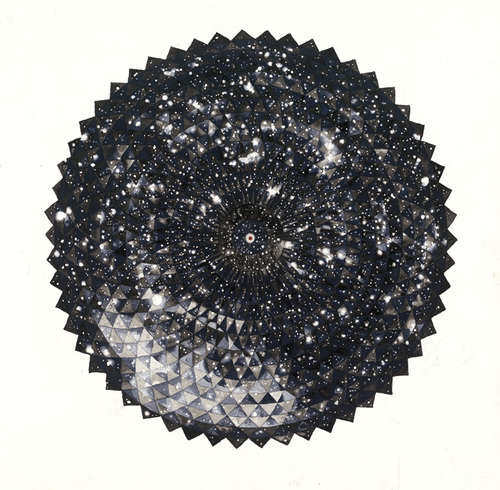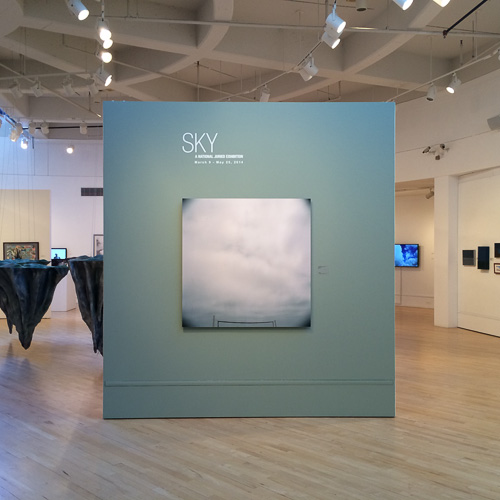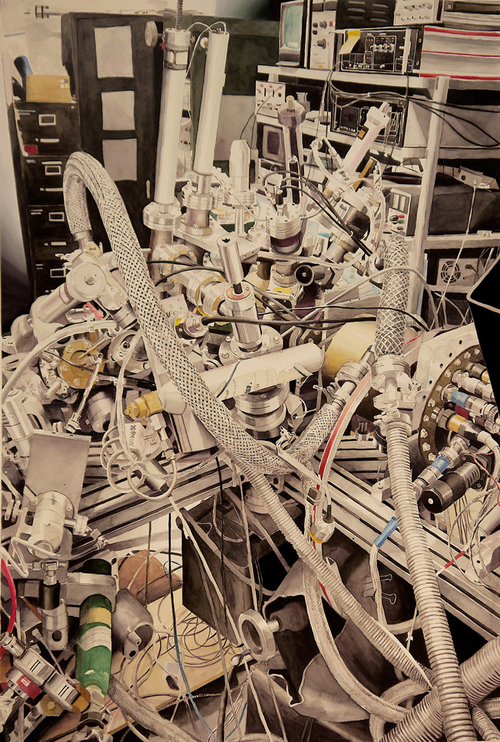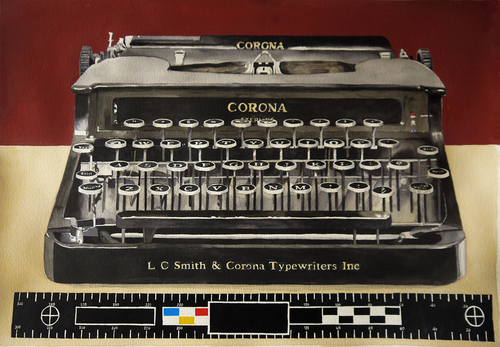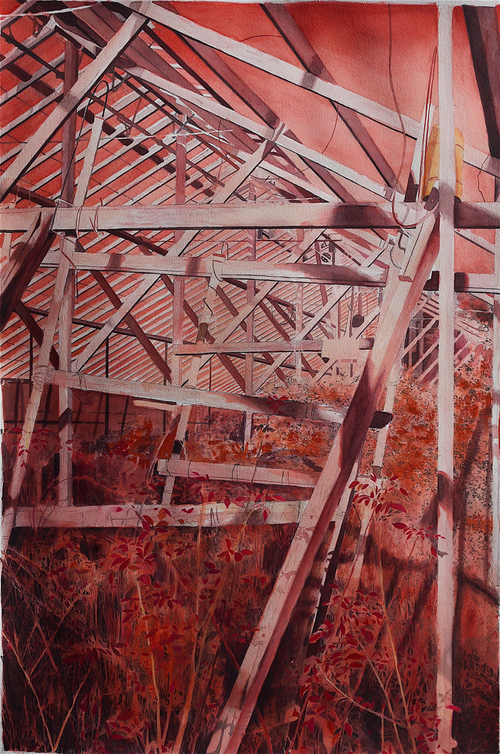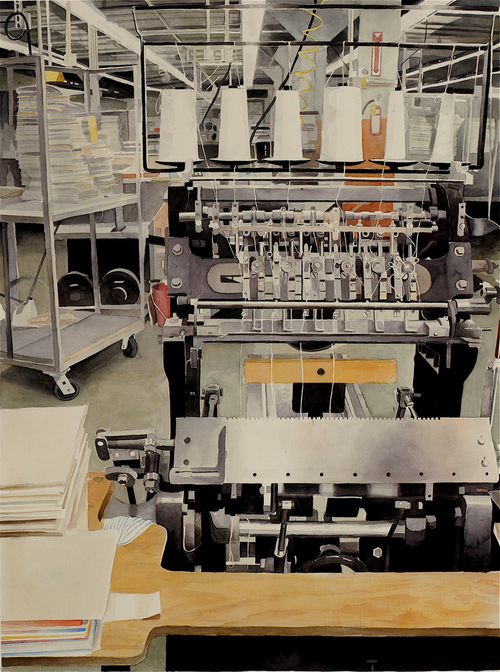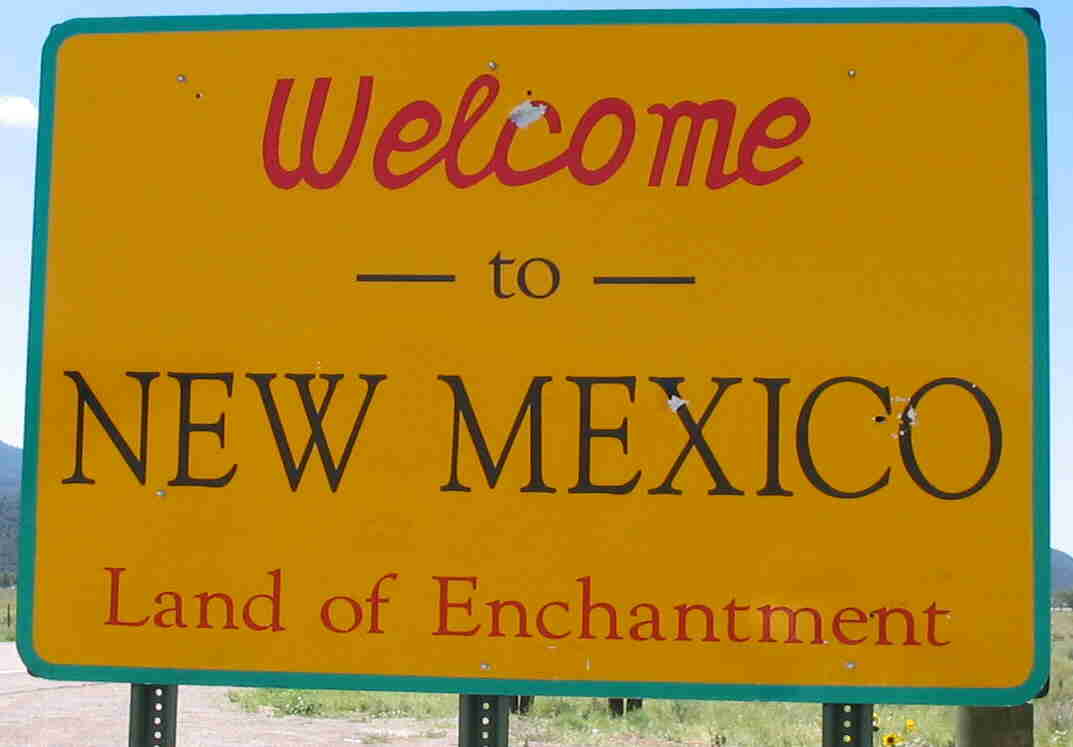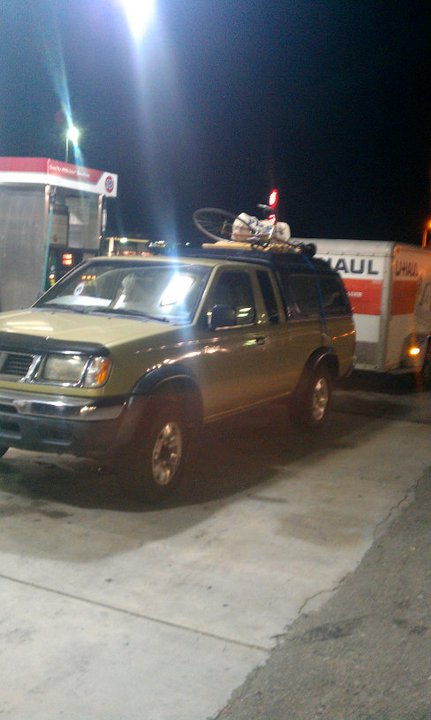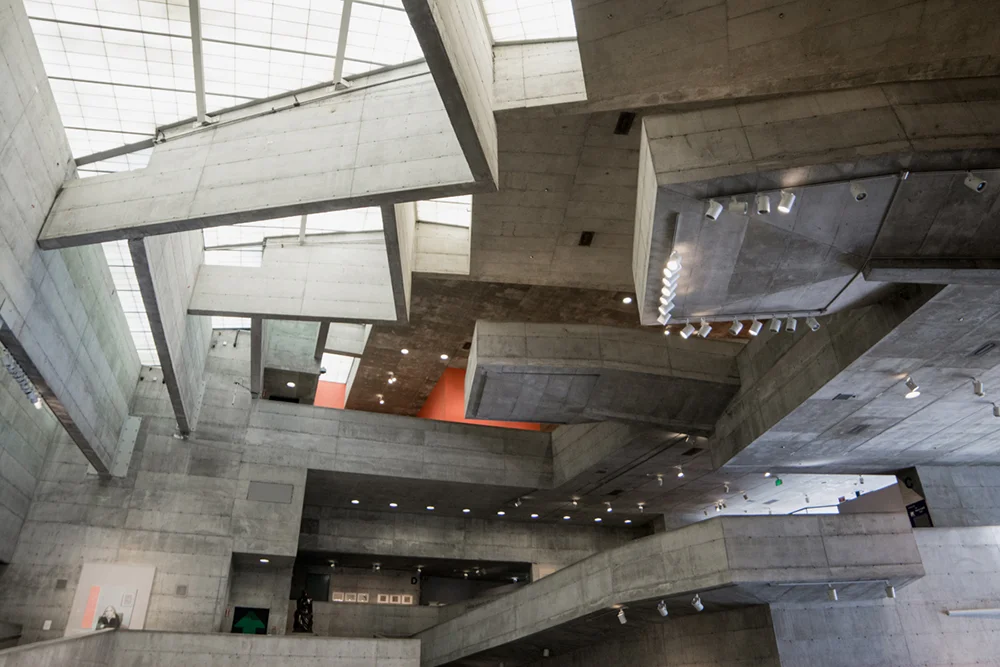Article in Santa Fe Reporter, by Liz Brindley
Matthew Mullins gets back to nature
And totally goes with the flow
June 14, 2017
By Liz Brindley
Walk into any gallery on Canyon Road and you’ll likely encounter a landscape painting: stunning vistas, expansive skies, expensive prices. After a while, the subject is worn out. When artist Matthew Mullins moved to Santa Fe, he told himself he was not going to paint landscapes, but now that’s the main focus of his work.
“When I moved to New Mexico, I was aware of landscape painting’s presence in Santa Fe,” Mullins says in his greenhouse studio as rain lightly patters on the windows. “I didn’t want anything to do with it—it felt too safe. I was resistant to being influenced by the landscape. But then it became inevitable.”
Matthew Mullins, Ridge, Oil on canvas
A few years ago, Mullins was creating an array of intensely photorealistic watercolors depicting museum basements and scientific storage facilities, drastically different environments than what he depicts today. Mullins tried to hold onto this practice when he arrived in the Southwest, but ultimately found it was forced. The landscape’s call was too strong, and he had to shift gears. Mullins let go into the flow of new creative tides and began painting his surroundings.
But his interpretations do not follow the traditional trail of landscape paintings. Rather, they dive into an abstract realm where barriers of stark white geometric lines cover the canvas and act as protectors of natural spaces. This veil of patterns is inspired by human design seen in quilts, tiles, tapestries—anything created by hand.
“In these paintings, I combine two disparate things,” Mullins explains. “The geometric pattern and the natural landscape. I want the pattern to help the landscape and the landscape to help the pattern to ultimately bridge the divide and make it as harmonious as possible.”
Matthew Mullins, Caldera, Oil on Canvas
The layered composition of opposing forces makes our brains stumble for a moment as we try to make sense of what is going on. Mullins wants viewers to let go of the desire to “figure it out” and surrender to the visual experience.
“The pattern prevents instantaneous answers,” he says, “but if you give it even three seconds, your brain will start to make some sense of it—and that’s not a lot to ask, but it’s more than a lot of people are willing to give.”
Close observation reveals the natural world embedded into the process. Mullins incorporates a variety of elements into his paints including slate, zinc and nickel.
“I’m really into rocks. They have this special earth energy that we pick up on somehow; I usually have a rock in my pocket,” he shares, pulling out a reflective black stone. “Today I have a meteorite.”
This admiration for different elements of the earth recently led the artist to shift into sculpture. Furthering ecological exploration, Mullins collects gnarly chunks of wood and coats them entirely with graphite. This meditative exercise releases the human construct of time and falls into the natural rhythm of process.
“I like to get into these flow states, these trance states, where you’re really involved in the process,” he says. “With these sculptures, it’s just doing the one thing. It’s a simple process, but it’s a very focused process. You have to be really aware of every ridge of the wood to care for its delicate nature.”
Matthew Mullins, Tripod, Graphite on Found Wood
By the time the process is complete, what was once a recognizable section of wood looks charred and mechanical, an appearance that radiates a futuristic feeling and grates against our traditional notions of nature. These sculptural works beg to be touched, but instead sit silent on white gallery pedestals, frozen in time as projected future preservations of the present moment.
As for the future of Mullins’ artwork, he says he doesn’t have an exact plan. “I want to be surprised by the art process,” he tells SFR. “It’s like crossing a river with stepping stones. I’m only thinking about the next stone.”
Mullins’ landscapes are currently elevated on the walls of form & concept (435 S Guadalupe St., 982-8111), because sometimes that is what it takes for an everyday subject to be respected and seen. On view as part of the gallery’s one-year anniversary exhibition through Oct. 22, Mullins’ hope for his pieces is that people will take time to slow down, let the visual patterns wash over them, and leave with a greater awareness of nature.































